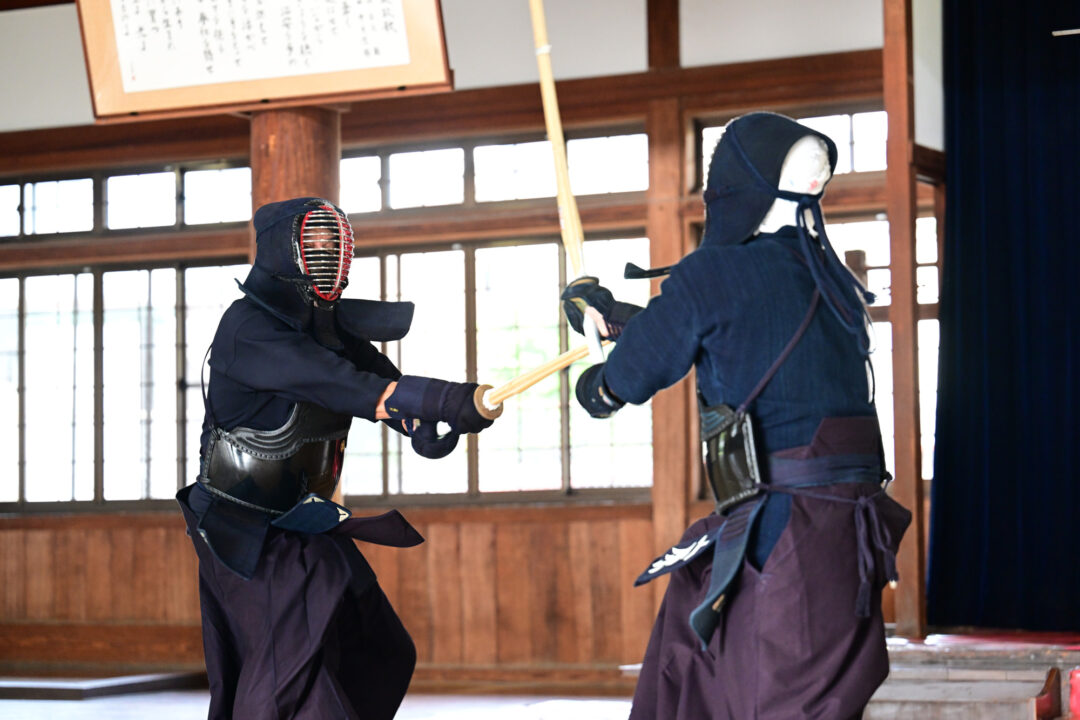2023.1 KENDOJIDAI
Planning: Nishiguchi Kunihiko
Translation: Jouke van der Woude
“I aim to maintain a stable Kamae and to be constantly aware of striking accurately along the blade angle,” says Tanigawa Sensei, 8th Dan and senior instructor at the Miyazaki Prefectural Police. When aiming to achieve 8th Dan, he reevaluated his Kendo skills from scratch, sought to cultivate an unwavering spirit and the ability to exploit breaches in his opponent’s mind.”
Koji Tanigawa, 8th dan
Born in 1965. He went on to study at Tokai University after graduating from Takachiho High School, and then worked for the Miyazaki Prefectural Police. He has competed in the All Japan Kendo Championship, National Police Kendo Championship, All Japan TOZAI-TAIKO (East VS.West Japan) Kendo Championship, All Japan Interprefecture Kendo Championship, and the National Athletic Meet. He currently serves as a Kendo instructor for the Miyazaki Prefectural Police.
Ai-men and Debana-kote are techniques that capture the opponent’s intent. It is no exaggeration to say that they are the best opportunities in Kendo, and I worked hard to master them in preparation for my 8th Dan exam. However, the road to passing the exam was tough, and it took me 12 attempts before finally passing.
I began attending 8th Dan examinations as a spectator when I was 40 years old and had been making some preparations. However, because I had focused on competitions during my time in high school, university, and the police, I found it difficult to break old habits. I realized that I had not mastered the basics.
During my time at Takachiho High School, I received the teaching of “knowing how to win in mutual striking by keeping the center” from the late coach Yoshimoto Masami. In addition to technical guidance, Yoshimoto Sensei provided strict guidance on the importance of the attitude of the heart.
There is a Doka (a song of the way) that says “Under the sword that is being fiercely wielded lies hell, but by sacrificing oneself achievements can be found there.”
Returning to the basics of “knowing how to win in mutual striking” that I learned from Yoshimoto Sensei, I prepared myself for revision and tackled the examination.
I advanced to the 2nd round 6 times, and finally passed on my 6th attempt. Looking back now, I may have been able to strike on target, but I lacked the most important element of following through with the strike. With “winning through mutual striking,” if you make even one mistake, your opponent may strike you. Striking on a whim won’t have an effect on your opponent. Trying to be in harmony with my opponent, I went in with that idea of seizing a once-in-a-lifetime opportunity, and as such I was prepared to fail if I could not.
As a prefectural police instructor, I am fortunate to have the opportunity to train with Tokuren members regularly. They move quickly and have various types of attacks, including striking immediately after standing up from Sonkyo and executing feints before striking. To not lose to their spirit, I practiced enduring their Seme without being disturbed. By sensing their mental state while enduring, I was able to strike decisively at the right moment. As I became less afraid of being struck during Keiko, I gradually learned to strike the opponent’s soul, which may have led to my passing the examination.
Stabilize the left hand, left hip, and left foot in Kamae
The rest of this article is only available for Kendo Jidai International subscribers!


